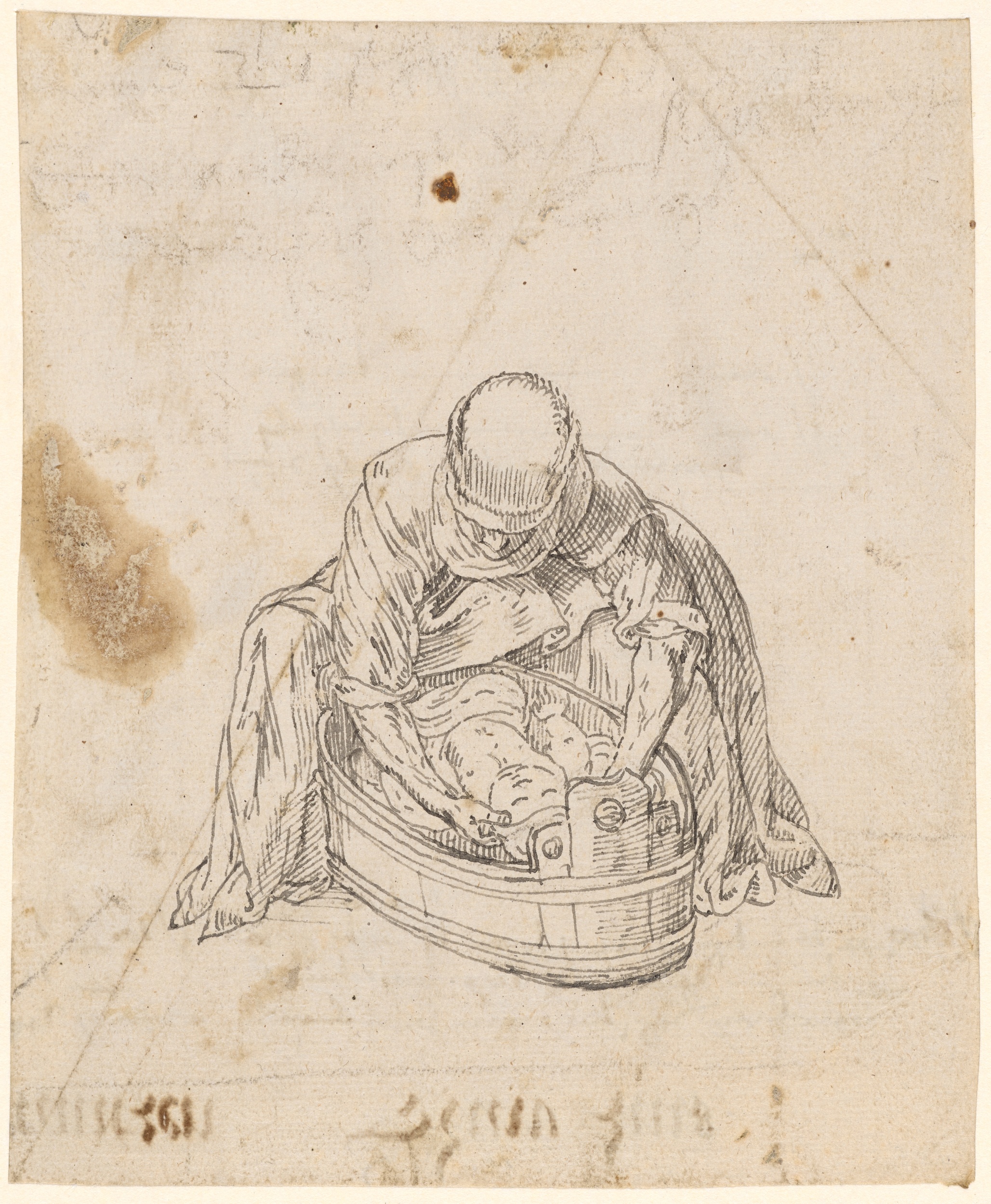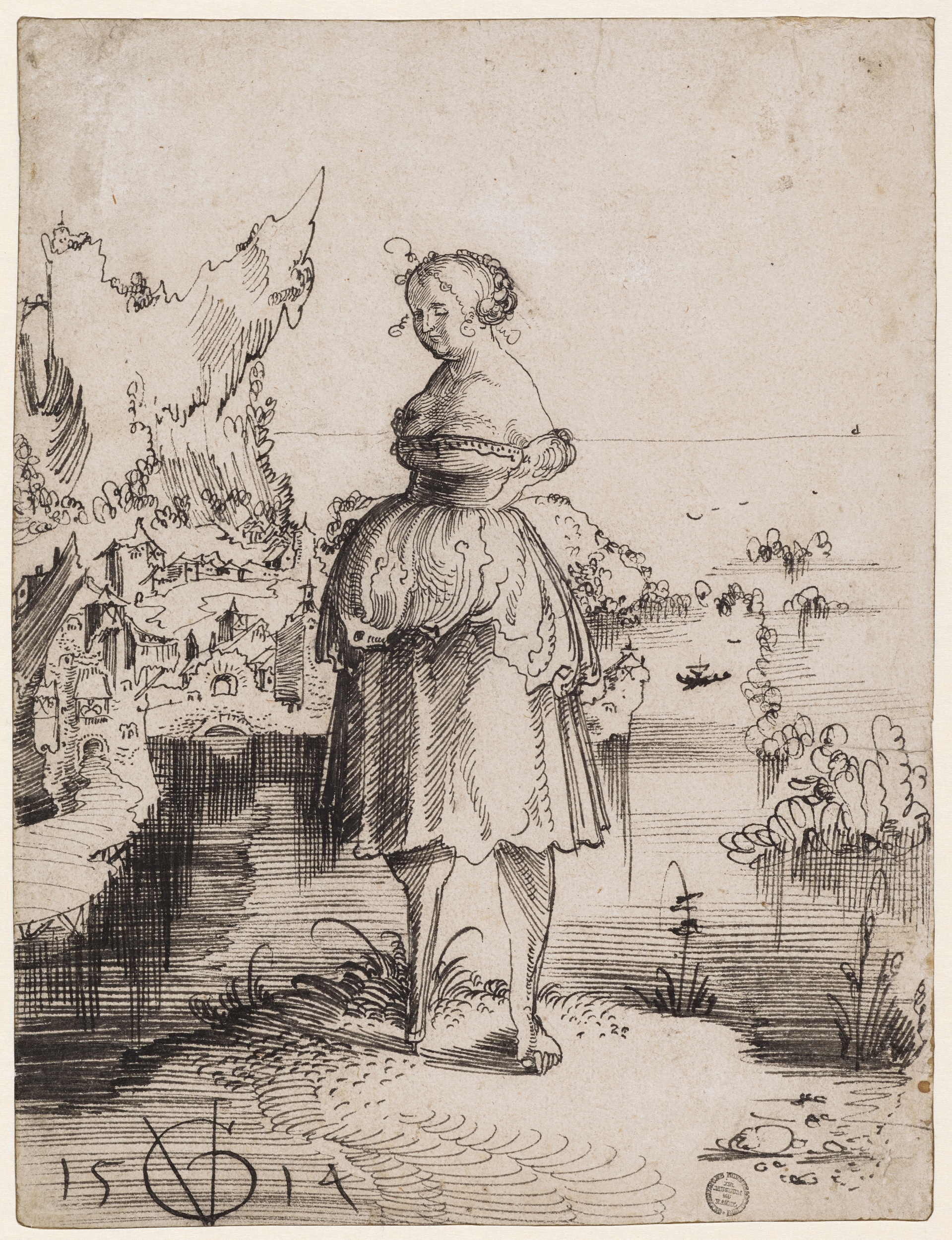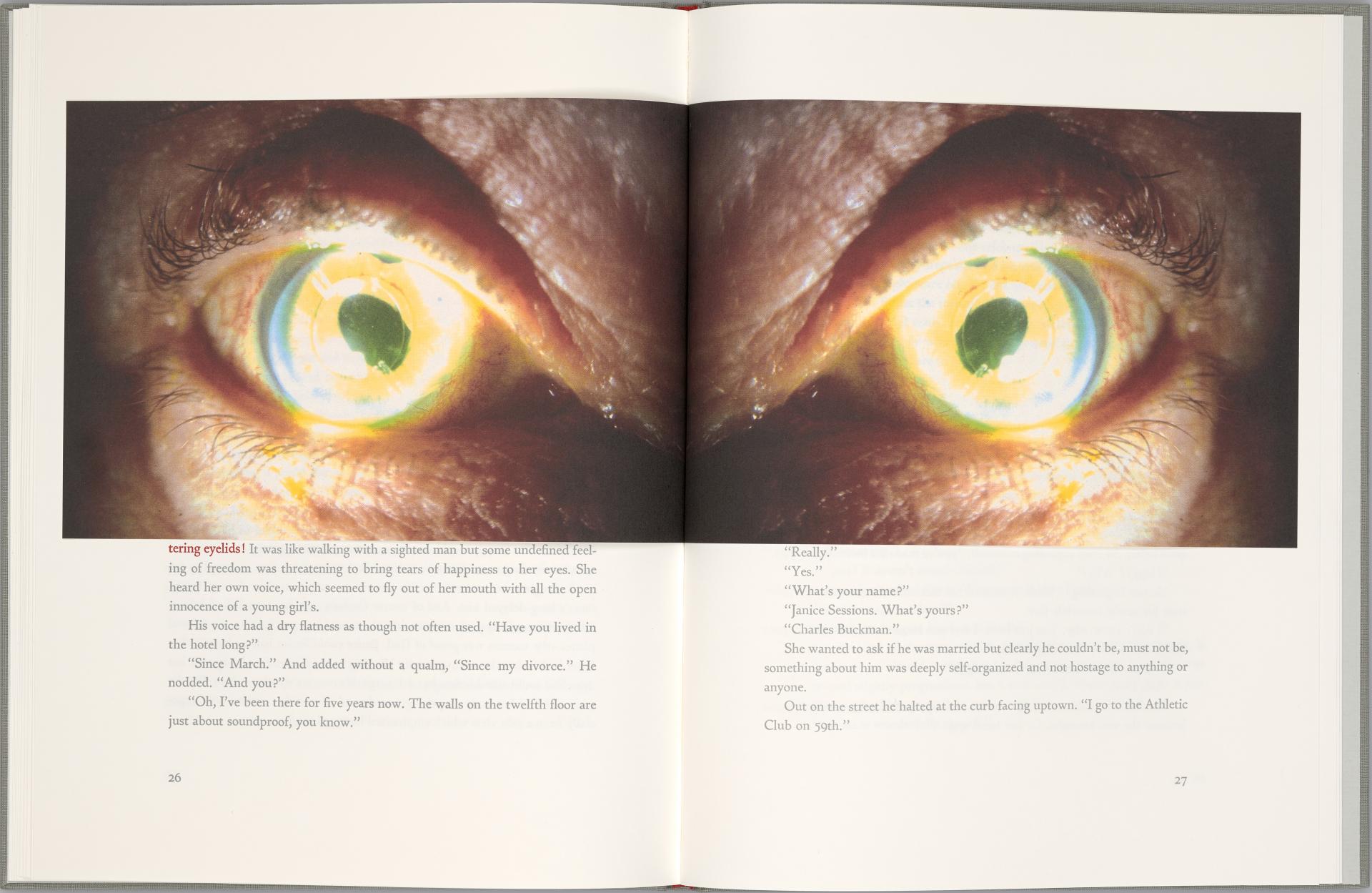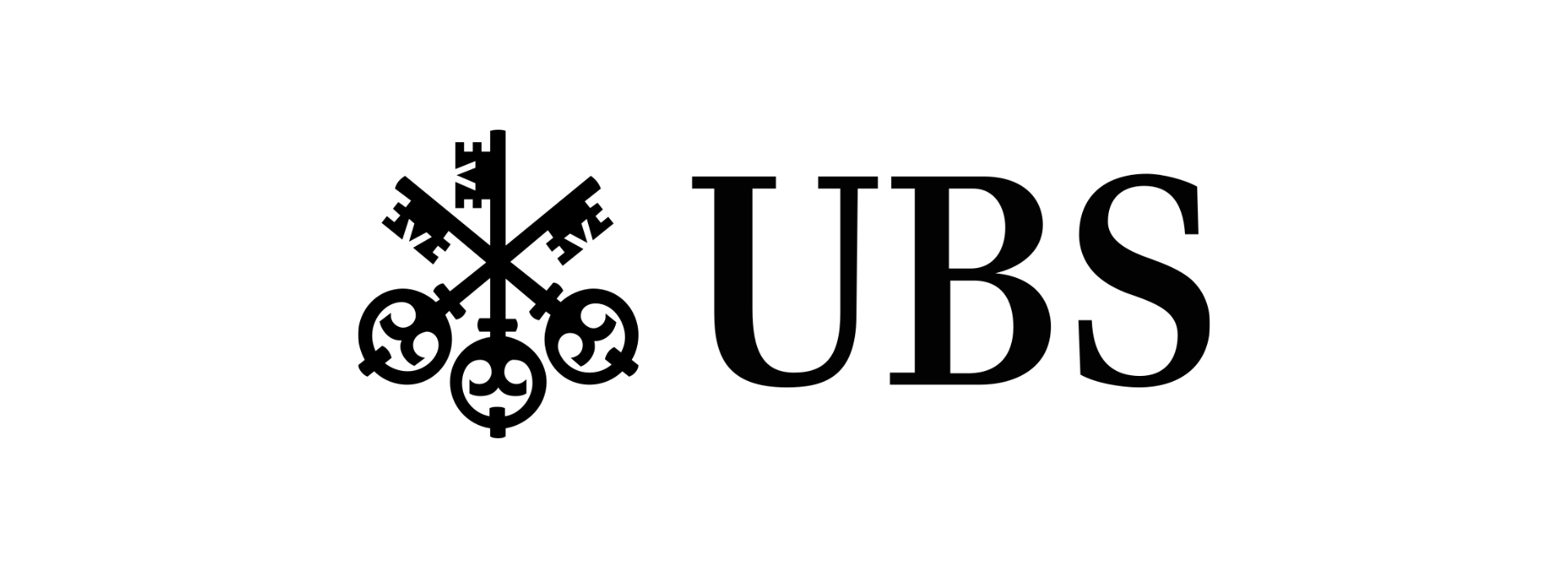Body and Writing
Works on Paper
The publication The Violence of Handwriting Across a Page is released in conjunction with the exhibition Louise Bourgeois x Jenny Holzer. The latter showcases the French-American artist Louise Bourgeois’ (1911–2010) oeuvre as seen through the eyes of the artist and curator Jenny Holzer (b. 1950); the book, meanwhile, presents Bourgeois’ works in dialogue with the collection of the Kunstmuseum Basel, picking up on concerns such as motherhood, the need to sever the filial bond, violence, and mutilation that are central in the exhibition and in Bourgeois’ art.
Titled Body and Writing, a presentation in the museum’s graphic-art cabinets showcases some of the works used for the artist’s book, complemented by drawings and prints with similar themes or formal features.

Hans Hug Kluber, Frau, ein kleines Kind in der Wanne badend, Kunstmuseum Basel, Kupferstichkabinett
The juxtaposition of works by Bourgeois with treasures from the collection illustrates, for instance, that motherly love, far from being uniformly nurturing, can evince a distinctly belligerent edge. The Madonna in Hans Holbein the Elder’s (ca. 1460/65–1524) drawing, for one, gazes placidly upon the infant Jesus feeding on her breast; everything about her is an expression of solicitude.
Hans Hug Kluber’s (1535/36–1578) unidentified woman is absorbed by the toddler she is bathing; in combination with Bourgeois’ note “Ne t’occupe pas de toi mème. Occupe toi des Autres,” however, such devotion becomes self-abandonment.
The selection is enhanced by a number of drawings and fine art prints that address similar themes or bear formal resemblances to the works chosen by Holzer. The first cabinet is dedicated to representations of violence; bearing witness to historic realities, these works also demonstrate the powerful impact images can have on the beholder.

Urs Graf, Armlose Dirne mit Stelzbein, 1514, Kunstmuseum Basel, Kupferstichkabinett,
Urs Graf’s (ca. 1485–1527/28) pencil captured an armless prostitute young woman walking on a peg leg, an example of the ever-present threat of dismemberment and disfigurement in times of war.
Works with traces of (hand)writing await discovery in the second cabinet. Among them are papers bearing inscriptions such as a 1593 handbill relating the events on the night of a murder. Other sheets contain printed images with areas left blank for lettering to be added: the master M.Z.’s (active around 1500) The Welcome is a wonderful example. Together with works such as Karl Schmidt-Rottluff’s (1884–1976) woodcut God and the Menace, in which the lettering is the image, the selection unfolds a wide spectrum of creative ideas across the centuries.


